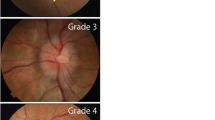Abstract
In this chapter, a clinical case explanatory of the various conditions relating to the pathology is presented.
Access provided by Autonomous University of Puebla. Download chapter PDF
Similar content being viewed by others
Fifty-nine-Year-old lady with a history of poorly controlled arterial hypertension was taken to A&E for sudden intense headache. Upon arrival at the hospital she was in the state of unconsciousness (GCS 3) associated with left anisocoria and arterial hypertension. She was then quickly sedated and intubated for airway protection and was taken to radiology for a head CT. Brain CT angio showed subarachnoid haemorrhage Fisher 4 grade with intraparenchymal haematoma from rupture of a bilobate aneurysm of the left middle cerebral artery (MCA) and initial hydrocephalus sings. The patient was then admitted to ICU where a TCCD was performed just after her arrival. The brain ultrasound showed:
The following day, angiographic coiling of the aneurysm was performed without complications, and sedation was stopped: GCS E4 M6 Vt patient was aphasic with a minor right motor weakness, and the patient was extubated. 24 hours after, GCS dropped to E4 M5 V2; a new brain CT showed increased hydrocephalus with a patent fourth ventricle, the reason why a lumbar puncture was carried out and 20 ml of haematic CSF (cerebrospinal fluid) was subtracted. After the procedure neurological status improved and brain ultrasound showed a narrowed third ventricle (5 mm width) (Fig. 33.3).
Author information
Authors and Affiliations
Editor information
Editors and Affiliations
Rights and permissions
Copyright information
© 2021 Springer Nature Switzerland AG
About this chapter
Cite this chapter
Bertuetti, R. et al. (2021). Case 9: Intracranial Hypertension and Hydrocephalus. In: Robba, C., Citerio, G. (eds) Echography and Doppler of the Brain. Springer, Cham. https://doi.org/10.1007/978-3-030-48202-2_33
Download citation
DOI: https://doi.org/10.1007/978-3-030-48202-2_33
Published:
Publisher Name: Springer, Cham
Print ISBN: 978-3-030-48201-5
Online ISBN: 978-3-030-48202-2
eBook Packages: MedicineMedicine (R0)







